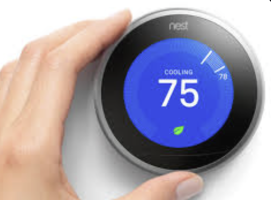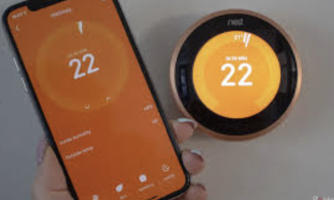Mr. Inspector
SAWHORSE
I don't know the ADA rules, but the NC IBC says that it needs to be in the reach range unless you do what Yikes says about putting a locked box over it or a thermostat that needs a combination to operate or if it is remote controlled. I would not require the sign that Yikes said it needs.
1109.13 Controls, Operating Mechanisms and Hardware
Diagram
Controls, operating mechanisms and hardware intended for operation by the occupant, including switches that control lighting and ventilation and electrical convenience outlets, in accessible spaces, along accessible routes or as parts of accessible elements shall be accessible.
Exceptions:
Operable parts that are intended for use only by service or maintenance personnel shall not be required to be accessible.
Electrical or communication receptacles serving a dedicated use shall not be required to be accessible.
Where two or more outlets are provided in a kitchen above a length of counter top that is uninterrupted by a sink or appliance, one outlet shall not be required to be accessible.
Floor electrical receptacles shall not be required to be accessible.
HVAC diffusers shall not be required to be accessible.
Except for light switches, where redundant controls are provided for a single element, one control in each space shall not be required to be accessible.
Access doors or gates in barrier walls and fences protecting pools, spas and hot tubs shall be permitted to comply with the exception to Section 1010.1.9.2.
1109.13 Controls, Operating Mechanisms and Hardware
Diagram
Controls, operating mechanisms and hardware intended for operation by the occupant, including switches that control lighting and ventilation and electrical convenience outlets, in accessible spaces, along accessible routes or as parts of accessible elements shall be accessible.
Exceptions:
Operable parts that are intended for use only by service or maintenance personnel shall not be required to be accessible.
Electrical or communication receptacles serving a dedicated use shall not be required to be accessible.
Where two or more outlets are provided in a kitchen above a length of counter top that is uninterrupted by a sink or appliance, one outlet shall not be required to be accessible.
Floor electrical receptacles shall not be required to be accessible.
HVAC diffusers shall not be required to be accessible.
Except for light switches, where redundant controls are provided for a single element, one control in each space shall not be required to be accessible.
Access doors or gates in barrier walls and fences protecting pools, spas and hot tubs shall be permitted to comply with the exception to Section 1010.1.9.2.


